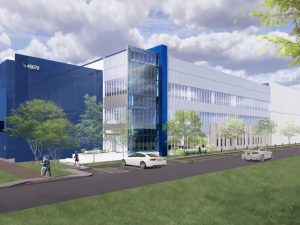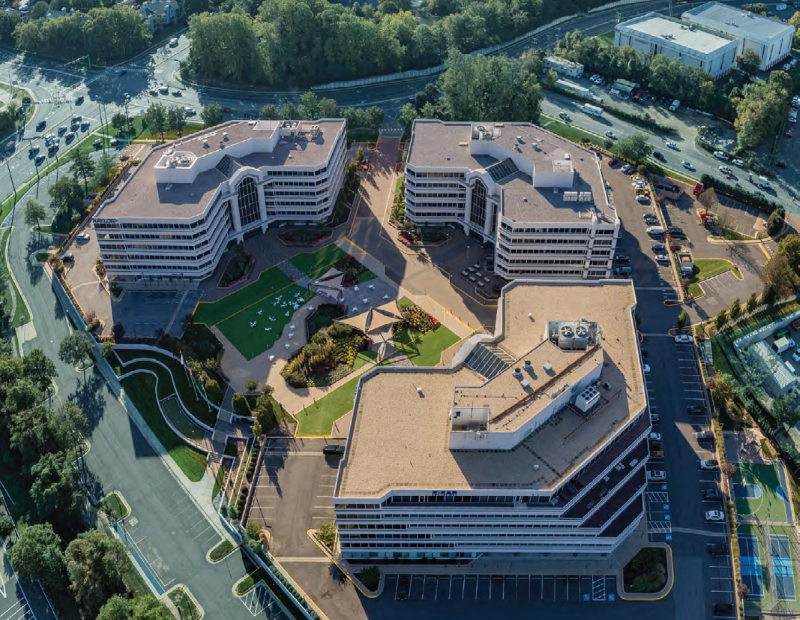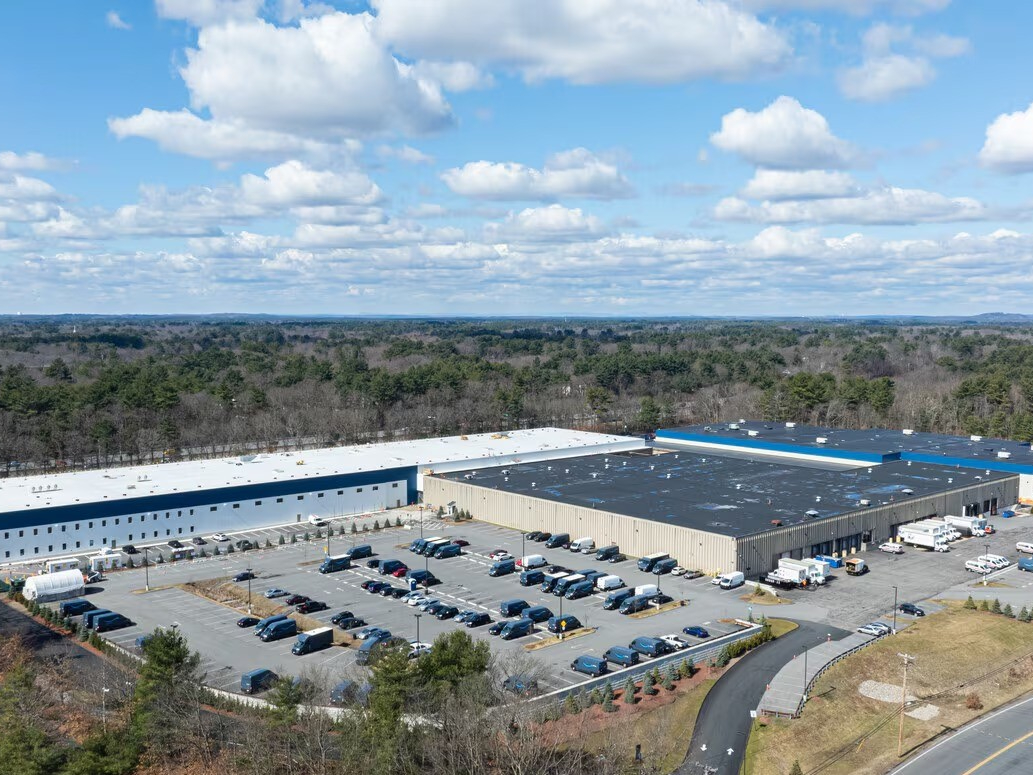Data Center Leasing Picks Up
Artificial intelligence deployments are driving strong demand for build-to-suit projects, according to the latest Cushman & Wakefield update.

Vantage Data Centers completed the first phase of its 96 MW campus in Ashburn, Va., that will total 800,000 square feet. Image courtesy of Vantage Data Centers
Data center leasing in the top U.S. markets started 2023 off slower than in past years but grew substantially through the rest of the first half, with many markets seeing strong preleasing activity and build-to-suit projects moving forward.
A new Cushman & Wakefield Americas data center update states many of those developments were driven by hyperscalers seeking to expand capability of sites to handle increasing artificial intelligence demands.
The report, which gives details about the top 10 data center markets in the U.S. as well as markets in Canada and Latin America, notes development is increasingly being constrained by limited power availability and rising land costs. Those dual headwinds are resulting in established markets like Portland/Eastern Oregon seeing more rapid growth or top markets like Northern Virginia seeing competition for colocation or hyperscale self-build purposes and the expansion of the market further away from Loudoun County to other parts of Virginia and even into nearby Maryland. Georgia, in particular the Atlanta market, is seeing a boost of data center development in part due to growing power limitations in Northern Virginia.
READ ALSO: What CRE Needs to Know About GenAI
Another trend cited by Cushman & Wakefield is major players opting for larger site acreages and power purchase agreements much earlier in the development process than in the past.
“With larger upfront commitments, data center developers will have greater leeway to phase out campuses at their own pace without constrictions for either unavailable power or searches for additional sites,” writes Jacob Albers, Head of Alternatives Insights and Global Think Tank research manager at Cushman & Wakefield.
The Cushman & Wakefield data center update classifies Atlanta, Chicago, Dallas, Northern Virginia, Phoenix and Silicon Valley as primary markets; and Columbus, Ohio; New York/New Jersey and Portland/Eastern Oregon as established markets, and Austin, Texas, as a secondary market.
Here’s a look at three of the larger markets outlined in the report:
Northern Virginia and outlying
Northern Virginia continues to be the top data center market in the U.S. with 4,507 MW in operation, including 447 MW absorbed in the first half of the year, another 396 MW under construction and a vacancy rate that remains at an all-time low of 0.9 percent. Despite growing headwinds for land and power availability, operators continue to expand the pipeline. The report notes that new projects have increasingly been planned further away from the market’s traditional data clusters like Loudoun County, where infrastructure is being upgraded to add more power, and Prince William County. In the past year, projects have been announced as far south as Richmond. The report states as interest in AI increases, peripheral developments in Southern Virginia, Maryland, West Virginia and North Carolina will continue to grow.
Major players planning projects or already developing projects include AWS, which has filed proposals for various sites such as Stafford County (510,000 square feet), Manassas (250,000 square feet) and Warrenton (220,000 square feet). AWS has also received approvals in King George County to construct a 7.3 million square-foot, 19-building campus.
Microsoft is expanding its Leesburg campus with two additional data centers and has announced plans for a 500,000-square-foot data center in Arcola. It also signed a nuclear PPA with Constellation to power its Boydton data center campus.
Vantage Data Centers completed the first phase of its 96 MW campus in Ashburn that will total 800,000 square feet. Peterson Cos. has proposed a 2.1 million-square-foot campus in Culpeper that will cover 150 acres of rezoned land and STACK Infrastructure plans to build 96 MW across two buildings in Manassas.
Phoenix
The Phoenix market reached a record level of absorption of 411 MW in 2022 and may surpass that this year with 325 MW absorbed in the first half of the year and 276 MW under construction. The market has a total of 1,257 MW in operation. Cushman & Wakefield notes hyperscalers and colocation providers alike have evaluated land across several submarkets including Arizona’s Mesa, Chandler, Goodyear, Glendale and Avondale.
“All major U.S. hyperscalers either have an established foothold or extensive plans to grow in the market. Market colocation veterans as well as new entrants continue to acquire land and break ground on new projects,” the report states.
While it’s not expected to limit growth in a market that already has a tight 2.8 percent vacancy rate, there are some concerns about the power grid and water usage issues. More private solar developers are building solar farms to help with the power grid, which currently is mainly a mix of natural gas and nuclear. The report states more state and local governments are asking data center operators to limit water usage and are incentivizing air-cooling technologies.
Companies that are planning or already constructing data centers in the market include AWS, Google, QTS, STACK Infrastructure, Prime Data Centers, Vantage Data Centers, and CT Realty, which is proposing two data centers (600,000 square feet and 196,000 square feet) as part of a 2.6 million-square-foot industrial and data center campus called Winner’s Circle Business Park on the site of the Turf Paradise horse racetrack in north Phoenix.
Portland/Eastern Oregon
This region has historically been considered a secondary market, but Cushman & Wakefield notes the core Portland market as well as outlying areas in Eastern Oregon have “become a hotbed of development over the past several years.” The report cites plentiful renewable energy, more affordable land parcels and proximity to West Coast markets as drivers of the growth from both hyperscalers and colocation providers who are quickly building campuses in the area. The market has a 2 percent vacancy rate and has seen 54 MW absorbed in the first half of 2023. With 1,040 MW already in operation, there is 383 MW under construction now.
Within Portland, 90 percent of the activity is in the Hillsboro data center cluster, where QTS, Digital Realty, STACK Infrastructure, Flexential, NTT and EdgeConneX have either developed properties or are under construction. In Eastern Oregon, hyperscalers including Google, Amazon and Meta have been establishing sizable data center campuses in several counties. Amazon is planning to invest $12 billion in a five data-center portfolio in Port of Morrow.
A glimpse into other notable data center markets
Here’s a quick look at statistics for the seven remaining U.S. markets included in the update:
- Atlanta—121 MW absorption, first half 2023; 670 MW under construction; 480 MW in operation; 2.9 percent vacancy rate;
- Austin—1 MW absorption, first half 2023; 102 MW under construction; 41.5 MW in operation; 10 percent vacancy rate;
- Chicago—72 MW absorption, first half 2023; 402 MW under construction; 688 MW in operation; 5.1 percent vacancy rate;
- Columbus, Ohio—3.7 MW absorption, first half 2023; 383 MW under construction; 475 MW in operation; 7 percent vacancy rate;
- Dallas—68 MW absorption, first half 2023; 140 MW under construction; 650 MW in operation; 3.4 percent vacancy rate;
- New York/New Jersey—10.7 MW absorption, first half 2023; 63 MW under construction; 376 MW in operation; 5.8 percent vacancy rate;
- Silicon Valley—43 MW absorption, first half; 315 MW under construction; 824 MW in operation; 4.5 percent vacancy rate.







You must be logged in to post a comment.